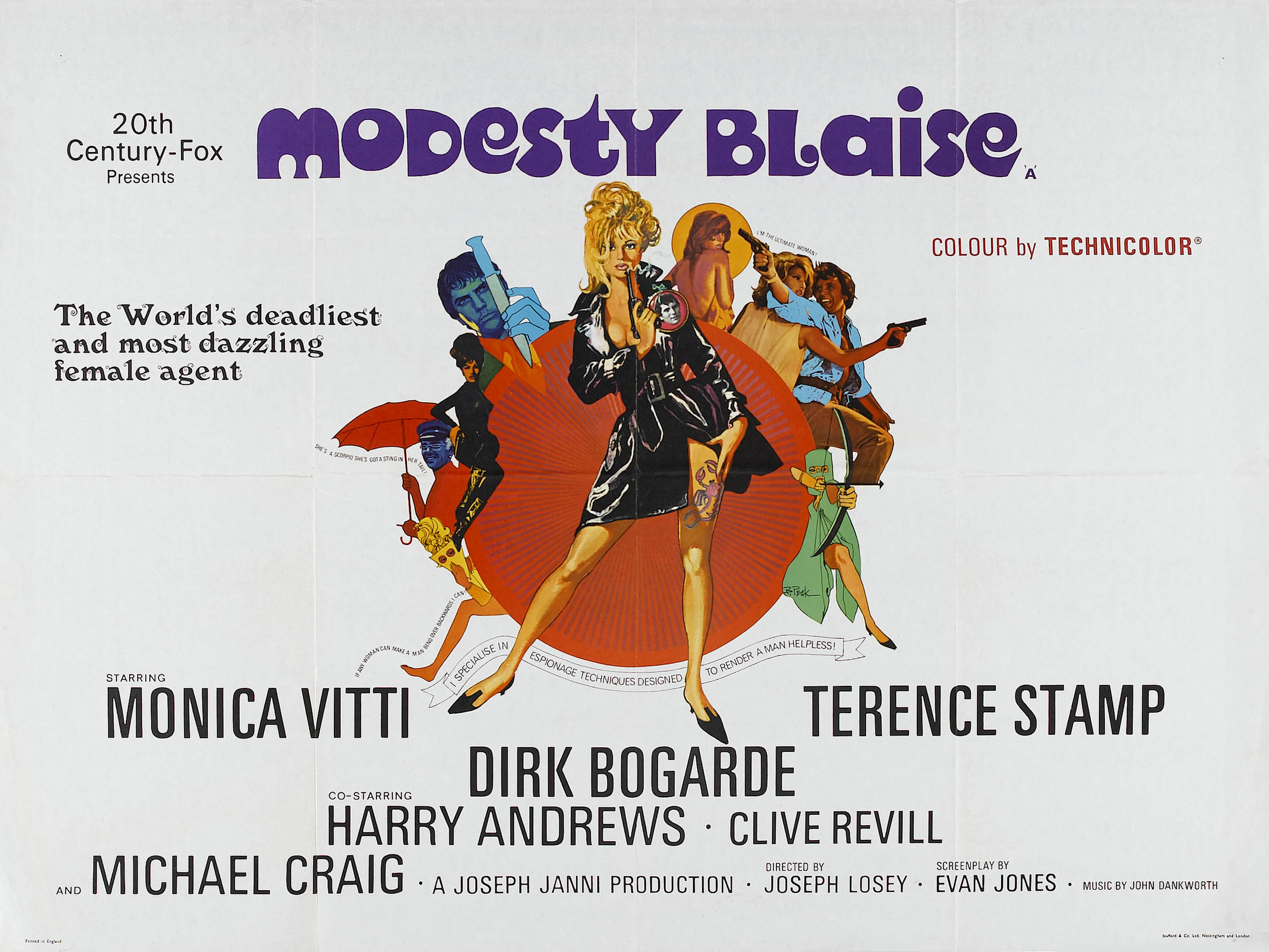by Catherine Grant
La Furia Umana

Modesty Blaise (Joseph Losey, 1966) travels the cinematic distance between an opening shot of the seemingly contented sleeping face of its star Monica Vitti and an extreme close-up of her eponymous character’s over-stimulated, rapacious look directly at the camera in the film’s final frames. This is a deceptively simple journey, perhaps. But, while making it, what she and certainly we do with our eyes repeatedly involves mirrors, as is so often the case in Losey’s looking-glass cinema. What Losey and his cinematographer Jack Hildyard achieve with reflective surfaces in this pop and pop art spy film, a ‘remediation’ of Peter O’Donnell’s much loved comic strip (1963-1986), however, has not been nearly as well received as the director’s earlier signature experiments with those forms, for example in The Servant (1963), or in Eve (1962), another of his ‘cosmopolitan’ films. In the latter work, locations in Venice afforded him the challenge of photographing, for the first time, ‘reflected surfaces: mirrors – one of his most cherished symbols – and water, in baths, fountains, canals and the sea’ [Edith de Rham, Joseph Losey (London: André Deutsch, 1991), p. 133]. Are Modesty Blaise’s multiple mirrorings a symptom of unrestrained and muddled fetishism, or, integral to what Durgnat takes as Losey’s film poetry? The following notes, and an accompanying video essay, offer some specular reflections.
To Read the Rest of the Essay
Mirror Visions in MODESTY BLAISE (Joseph Losey, 1966) from Catherine Grant on Vimeo.
Brillante!
ReplyDelete